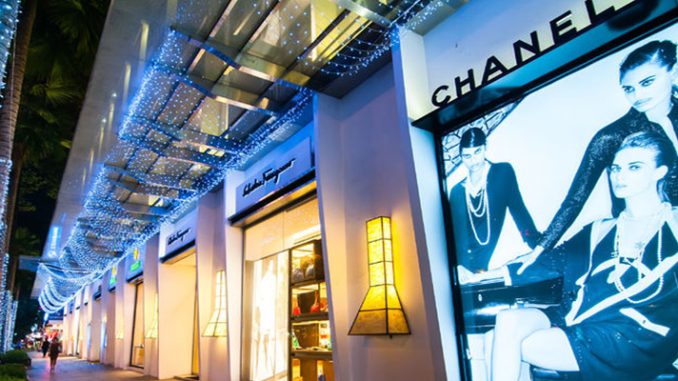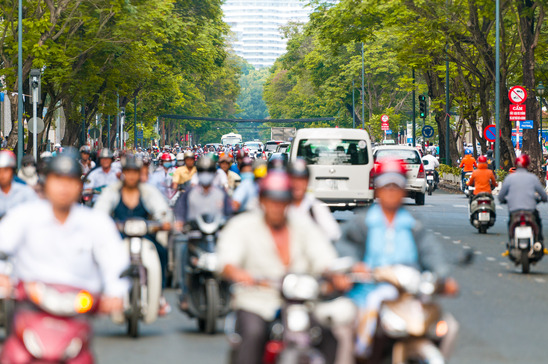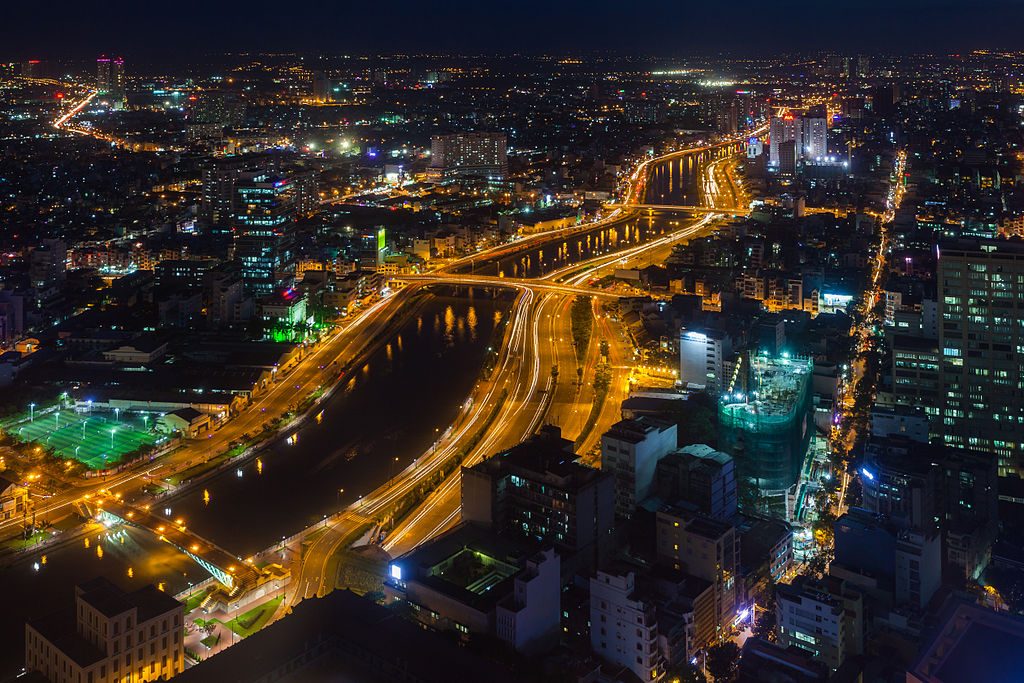
Approaching the three decades anniversary of the introduction of the Doi Moi reforms, Vietnam is often presented as a poster-child of economic development.
Vietnam’s successes like poverty alleviation and one of the highest growth rates in the region have been internationally acknowledged. As a result, the Vietnamese people not only were saved from the famine that was looming in the 1980s, but by the late 1990s ownership of goods such as refrigerators, TVs, motorbikes or washing machines, became the norm for urban dwellers. Today, there is a growing discussion about the rapid expansion of a middle-income consumer class. There are optimistic estimates about the growing middle class, and Vietnam is often referred to as the place where this segment is growing the fastest in Southeast Asia, 1 from 12 million in 2012, it is predicted to reach 33 million in 2020, that is around 1/3 of population which is predicted to reach 97 million by that time. 2 Paired with the strong urbanization movement, the growth of this group could well exceed these estimations. 3 The middle class is thought to drive more than 50% of country’s total consumption. Given the young profile of society (nearly 60% of people are under 30 years old), the consumption of global trends marks Vietnam as an important market. For example, it has become the fastest growing market for Apple products. 4
However, as much as market research testifies the impressive consumption power of the segment in Vietnam, the concept of the middle class sits uneasily in the context of this socialist country and it is challenging on a number of levels. The imprecise and inconsistent class terminology used in Vietnam, ‘middle level’ is, to some extent, politically intentional. The terms ‘middle class’ is still sensitive and seen as circumspect, and instead ‘middle level’ is used by the Vietnamese media use to avoid political connotation often attached to ‘class’ terminology. Furthermore, The discrepancy between official salaries and unofficial incomes 5 means that income criteria is not completely reliable in the Vietnamese context. Instead, relative standards take over in a similar vein as definitions are not driven by theoretical considerations but rather the availability of data.
An inherently elusive concept
In domestic research, the current middle class is being categorized in Vietnam as: (1) those who achieve their status by profession and (2) those who own property. While the second group enjoys the material wealth as owners of wealth and property (mainly land and housing), professionals attain their economic and social status thanks to their knowledge, education and skills. Among the first group are also the entrepreneurs who take risks and invest in businesses. In Ho Chi Minh City (HCMC, formerly Saigon), the country’s biggest and most economically advanced city, a group of professionals and entrepreneurs dominate the strata of middle class and continues to expand rapidly and include a large number of motivated individuals who headed to the city searching for opportunities for success. On the other hand, the middle class in Hanoi tends to be situated in the public sector.
While rapid economic development has resulted in growing socio-economic disparities that are demonstrated visibly in everyday life, the concept of class remains problematic and unspoken of. Although the term ‘middle class’ is widely used, the rapid growth of mid-level income consumers should not be seen as equivalent to the formation of a new class in Vietnamese society. That would entail certain features that would require a long time to emerge, including a collective identity and a perception of common interests within the group. In fact there are important regional and occupational differences between middle earners.

The geo-historical factors
While Doi Moi has had an overall effect on the country as a whole, for the people from Hanoi it is attributed with economic growth more than for the Saigonese. The latter group had been exposed to business opportunities before and benefitted from the advantage of their experience in capitalism. For northern Vietnam, it was a state policy that was needed to open doors for opportunities. But for the original Saigonese (those who lived in Saigon before 1975), it was rather a symbolic release of the socialist restrictions that had curbed their mercantile potential. Notwithstanding the historical conditionality, today’s HCMC is the business powerhouse of the country. For that reason, it can be the ‘face’ of the new Vietnam – the one that has embraced the neoliberal order. It attracts people from various regions and backgrounds with its opportunities and dynamism. HCMC’s new middle class is the ‘product’ of upward social mobility through hard work and flexibility in seizing opportunities.
The social and economic features of the emerging middle class is multi-faceted, but the most interesting facet of ‘class’ in Vietnam is the political one. The Vietnamese urban middle class is still in the phase of formation and is far from being homogenous. The growing middle class in Ho Chi Minh City includes many Northerners too, as well as people from across the country. Regardless of their regional origins, the middle class in HCMC is predominantly grounded in the private sector. They are much more innovative and business-savvy and find themselves in-sync with the capitalist reality. They consider themselves ahead of people from the north who experienced the socialist regime much longer and have limited know-how in terms of the market economy. And with business culture and opportunities, the former Saigon has the buzz that traditional Hanoi is still acquiring. With such differences in political, economic and social conditions, the two regions’ middle class become representative samples of the country’s growing strata of the beneficiaries of the Doi Moi policies. And while the ‘class’ identity is yet to develop, this educated and well-connected group possesses real strategic potential.

Photo: Wikimedia commons
The socialist-to-capitalist transition
The transition to capitalism has become ground into the economic and social fabric of the nation, and this is true even though Vietnam is still politically clinging to communism. Unlike in China, where social policies explicitly address the middle class as the foundation of the nation’s stability, Vietnam is still passing through a stage in which is it is reluctant to acknowledge its existence.
This is partly because the formation of this class in Vietnam is still at an early stage compared with China. Another factor is the preference among the political decision makers to ‘not fix things if they are not broken’ and postponing decisions. However, I argue that it is high time that the government addresses the policy needs of this growing group. The political ideology behind the ‘classless’ society is no longer feasible in the current reality where social distinctions are increasingly apparent. The rapid growth of the middle class, in the absence of specific government social policies, could be strategically dangerous for Vietnam, perhaps resulting in a risky vacuum that may leave this group to develop political potential.
Huong Le Thu
Huong Le Thu is a researcher based at the ISEAS-Yusof Ishak Institute, Singapore. Her research include Vietnam-China relations, and political and social change in Vietnam.
A version of this article was published earlier by Nikkei Asia Review, “Vietnam needs policy for its growing middle class”: http://asia.nikkei.com/Viewpoints/Perspectives/Vietnam-needs-a-policy-for-its-growing-middle-class
YAV, Issue 19, Kyoto Review of Southeast Asia. March 2016
For Past Young Academic’s Voice articles —
Notes:
- http://www.vietnam-briefing.com/news/vietnams-middle-class-fastest-growing-southeast-asia.html/ ↩
- http://populationpyramid.net/viet-nam/2020/ ↩
- http://www.dna.com.vn/vi/tin-tuc-thuong-hieu/tin-trong-nuoc/tang-lop-trung-luu-dang-gia-tang-nhanh-tai-viet-nam-/ ↩
- https://www.techinasia.com/vietnam-fastest-growth-in-vietnam ↩
- http://www.iseas.edu.sg/images/pdf/ISEAS_Perspective_2015_8.pdf ↩

